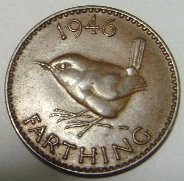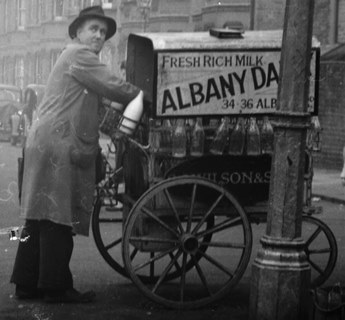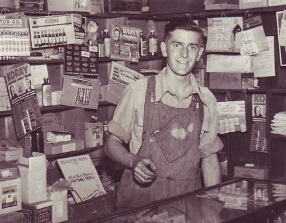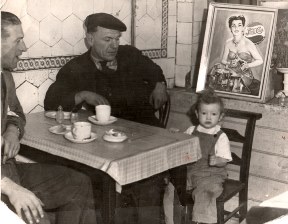Basics
Home and SearchSite Guide
Brentford Basics
Privacy Policy
Contact
People
FamiliesPhotos of people
Name indexes incl WW1
Memories
Lists, Documents, News
Occupations
Properties
Properties: High StreetProperties: non-High Street
Photos
Maps
1909/10 Valuation Index
Pub Hub
Can You Help?
Seeking...Mystery photos
Roads Off
A-Z listJanet's Research
HistoryBeach's Jam
Nowell Parr
Turner the Artist
Queen Victoria 1840
Brentford Market
80 High Street
Clitherow of Boston House
Four Croxford Brothers
Sources & More
They SaidBooks etc.
Web Links
Next
Site Technology
Author
Home and Search
Not Brentford
Terry Burke's memories of Brentford from the 1930s to the 1960s
My recollections of Brentford are in the context of the world when both it and I were much younger. The political, social, economic and technological changes during my lifetime have been faster and wider ranging than at any time in recorded history. The most profound changes were the changes of Britain’s currency of pounds, shillings and pence (Lsd) to decimal; weights from avoirdupois to metric; pints and gallons to litres; measurements from Imperial to metric; temperature from Fahrenheit to Celsius. The changes in prices, wages and values are not exactly astonishing, they are astounding.To put my recollections of what living in Brentford during the period of 1934 to around the 1960s was like, the following tables provide benchmarks against which comparisons may be made by the reader.
To skip to a particular section, use these links:
- Weight
- Volume
- Temperature
- Area
- Late 1930s wages
- Pre-war prices includes clothing, food, furniture, luxuries and everyday items
- Housing
- Rationing
- Living costs
- Entertainment includes transport
MONEY

Coins: Copper
| Farthing | (¼d) 2 = |
| Halfpenny | (½d) Hape’ney) 2 = |
| Penny | (1d), |
| 2 farthings | 1 halfpenny, |
| 2 halfpennies | 1 penny |
| 960 farthings | £1 (one pound Sterling) |
Bronze
| 3 penny piece | 3d (‘thrup-enny’ bit’) |
Silver
| 3d bit | |
| 6d | sixpence known as a ‘tanner’ |
| 1 shilling | 12d known as a ‘ bob’ |
| 2 shilling piece | 2/- a florin, or two bob bit |
| Half-a-crown | 2/6 two shillings and sixpence |
Bank Notes
| 10/- note | Known as a ten bob note (brown) |
| £1 pound note | green |
| £5 five pound notes | large, white |
WEIGHT
Fruit and vegetables were sold by the pound (lb): the photo shows a display of vegetables at Daubney's shop on Albany Road - read more about the family and their shops. The site also has a photo of Anthony's, greengrocers at 326 High Street, from the 1950s. Loose sweets were sold by the ¼ lb (quarter lb) modern equivalent is 100 grams Meat, fish, groceries and provisions were sold by weight and priced in Lsd. |
 |
VOLUME
 |
Liquids were sold in pints (milk, beer), quarts and litres gallons (petrol). The photo shows Amos Cox, the milkman of Albany Road, with his handcart - read more about him. |
TEMPERATURE
| Fahrenheit degrees (F) | Celsius degrees (C) | |
|---|---|---|
| 32 | Freezing | 0 |
| 61 | Nice Day | 16 |
| 75 | Warm | 24 |
| 90 | Hot Day | 32 |
| 100 | Sweltering | 38 |
AREA
| 1 sq. foot | = 92.9 sq. cms |
| 1 sq. yard. | = 0.836 sq. metres |
| 1 acre | = 0.45 hectares |
| 1 sq. mile | = 2.6 sq. km |
Inventions, technical improvements, social and economic changes, life styles, expectations, mass production, globalisation, health, working hours and conditions, etc. make price and value comparisons between then and now virtually meaningless and require expert analysis. Authoritive and official sources indicate that £1 in 1934 would be the equivalent of nearly £64 in 2016; conversely, £1 today would only have the purchasing power about 2½d or 1p. In 1939 you could buy an apple for 1d, or a tube of Rollo for 2d.
LATE 1930s WAGES (approximate)
I started work as a clerk In 1951 and paid £2/9/0 (two pounds nine shillings) for a 5½ day, 42½ hour, week = 14d - 5p per hour.A female friend began work in an Insurance company in the City of London in 1950 and paid £6.10 per month. She was told to open a bank account so that her wages could be paid in once a month into a bank. She remembered going into one of the City biggest Banks and being seen by the Bank Manager who said he would open an account if she could put something in to start with. Her money was split £2 to her widowed mother. Her father died when she was 2½years old and her mother had 5/- a week to bring her up from a widow’s pension of 30/-s.’
Another was paid £8/10/0d per month in 1952 and gave her mother half. This young lady joined a company in Regent Street, London in 1954 as a departmental manager’s audio secretary at £5/0/0 per week (what she asked for!) which increased 6 months later to £7/10/0 ‘but don’t tell the other girls’.
A third started work with Lloyds Bank in September 1950 at £2/15/0d per week.
There were no job descriptions and you did whatever needed doing and kept on until the job was finished. Everyone worked a 5½ day week from 9 until 5.30; 12 or 12.30 on Saturday.
| Unskilled adult man | £1/10/0 per week |
| Skilled man (engineer/mechanic/bricklayer) | £4 - £5 per week |
| Engine (steam locomotive) driver | £5 per week |
| Locomotive Fireman | £2/10/0 to £3/0/0 per week |
| Miner | £1/10/6d a week |
| High Street Bank Manager | £7 to £9 a week |
| Typist/Office worker/Clerk | £1/10 to £2 per week |
Professional Footballer in the first team, £7 per week in winter, with a £1 win bonus; £6 per week during the summer ‘close’ season.
Servants
Chauffeur £2/10/0 a week; a housemaid might be paid £20 a year; a cook £30 a year, and many ‘middle class households employed servants, ‘living in’.
Income Tax was 1/6d (7½p) in the £1 (7.5%) Currently 20% to 50%.
Pre-war PRICES
Clothing
A woman’s dress 7/11¾d, expressed as ‘seven and eleven three’ i.e. seven shillings and eleven pence three farthings.Man’s 3 piece made to measure suit (jacket, waistcoat and trousers, - sometimes two pairs) – 50/- (fifty shillings = two pounds ten shillings; £2/10/0 or £3/0/0 for a better cloth. A popular chain of men’s tailors was named ‘The Fifty Shilling Tailors').
 | TransportA new small car – Morris 8, Austin 7, Ford ‘Y’ (Anglia) £120/£130A used car might cost £30/£50 Petrol 1/6 per gallon = 7½p - (a little less than 1.7p a litre) |
Food
| Bacon | 6d to 8d per lb |
| Butter | 1/0d (1 shilling) per lb |
| Tea | 1/2 (‘one and two or one shilling and two pence) per lb (loose – no tea bags) |
| Milk | 2d a quart (2 pints) |
| Chicken | 3/0d |
| Turkey | 10/6d |
| Large loaf of bread | 4d |
| Doughnut | 12 (you actually got 13 - a ‘baker’s dozen’) 6d |
| Chelsea/bath bun | 1d |
| Packet of crisps (from pub) | 1d |
| ½ lb biscuits (loose) | 2d |
| 2lb Joint of beef | 2/0d |
| Scrag end of lamb/shin of beef | 6d per lb |
| 1 lb minced beef | 7½d |
| 5lb potatoes | 6d |
| 1lb Tomatoes | 4d (seasonal) |
| Cabbage | 1d to 2d (size/variety) |
| 1lb carrots | 1d |
| 1lb apples (eating) | 2d to 3d lb (cooking) 1d lb |
| 20 Cigarettes | 6d. Cheap brands sold in packets of 5. |
| Pint of beer | 3d |
| Bottle of Brandy/Scotch Whisky | 5/6d |
| Bottle of wine | 2/6 to 5/- |
Furniture (local shop/Co-op)
Three piece suite (two armchairs and a settee) - January 1939 advert has sale prices from 15 to 22 guineas, normal prices 22 - 32 guineas (one guinea = £1 1s)Dining table & 4 chairs - November 1934 advert - £8 19s 6d (reduced from 14 guineas)
Wardrobe - £5 to £7.50
Bedroom suite – 4’6” double bed, including mattress, dressing table, chest of drawers, 2 x bedside tables £25 to £40.
LUXURIES/Everyday items
Radio (called a wireless – not Wi-fi) £10/0/0Kodak Box Brownie camera 5/0d (plus ‘running’ costs of a roll of film with 8 exposures, 1/- plus developing and printing at the local chemists 1/-d
Bicycle £5 to £10 [One of the High Street cycle shops was at no. 143: Stella Cycle Co.]
Newspaper 1d
Hobby/General interest magazine 2d to 4d - Woman/Woman’s Own
Radio Times 2d
There were no supermarkets or self-service shops, Pre-packed food and ready-meals were virtually unknown. No ‘Take-aways’ except for fish & chip shops and the occasional ‘eel, pie and mash’ shops.
Most high streets were very similar. Shops were generally family run locals. Most shops closed at 5.30 p.m. later on Saturdays. Some Jewish shops closed on Saturdays but opened for a limited period on Sunday. Sunday trading was not allowed (except newsagents). Most towns had a mandatory ‘early closing day’ when virtually all shops closed at 1 p.m. Early closing day was designated by the local council. Many butchers and fish shops closed on Mondays. Bank opening hours were 10 a.m. until 3 p.m. (10 until 12 on Saturdays). There were no cash machines.
There might be 4,5 or even 6 grocers and provision merchants in towns and suburban shopping areas, some of which might be national chains such as Liptons, World Stores, a semi-local or regional Co-op plus several green-grocers selling fresh fruit and vegetables. 2 ‘fresh or wet’ fish shops, with fish and chip shops more likely to be found in the more residential streets.
There would be a number of bakers baking on their own premises and 3 or 4 butchers.
There might be several dress shops, two or three men’s tailors (usually chain stores), men’s and children’s outfitters, a linen drapers, a haberdashery/ material/curtain/cushion shop; a hardware store, a local department store, a chemists, a toy shop, a wool shop, opticians, newsagents and tobacconists, sweet shop and perhaps some specialist shops catering for toys, hobbies or special interests. No sex shops, no bookmakers or betting shops.
 The photo shows the interior of Alice Newman's novelty shop at 245 High Street: read more about the Newman family and see more photos.
The photo shows the interior of Alice Newman's novelty shop at 245 High Street: read more about the Newman family and see more photos.
There was generally a Post Office, a furniture shop, shoe shops; wireless and electrical fittings shops, a couple of ladies hairdressers and a barber’s or two which, in addition to haircuts, provided shaves for 1/-. There may have been 1 or 2 Estate Agents, a Photographers, a Tobacconists selling Pipes and loose pipe tobacco mixed to customer’s own requirements; A Jewellers/Pawn Shops, a Funeral Parlour, an Ice cream shop, shoe menders and perhaps a Furriers; Ladies’ dress and a lingerie/corsetiere shop.
The consumption of alcohol was strictly regulated. Pubs could only open during ‘opening or licencing’ hours. These varied slightly from town to town but were generally 11am (12 on Sundays) until 2 pm and 6.30 pm until 10.30 pm (10.00) on Sundays. Many pubs had a Bottle & Jug ‘bar’ from which customers could purchase bottled beer (usually Stout) or draft beer in a jug for consumption at home. A licensee could lose his licence to sell alcohol if he served customers after closing time. There was no ‘drinking up time’ and the licensee would normally call ‘Time Gentlemen please’ a few minutes after calling ‘Last orders please’.
There were a few off-licences for alcoholic drinks which were limited to the opening hours of pubs, except Sundays when they generally had to remain closed. Ordinary shops were prohibited from selling alcohol at all, although there were a few ‘licenced’ grocers.
Grocer’s and provision shops sold much of their goods loose. Items, such as butter, cheese, sugar, flour, biscuits, tea were weighed out as required, generally priced ‘per lb’ although some items were sold by the quarter (pound) lb. Some goods such as cocoa came in tins, salt in packets, sugar was always put into blue bags, flour, dried beans, dried peas, butter beans etc. into brown bags; soda and soap flakes into grey ones. Wet fish was wrapped in newspaper; meat into white greaseproof paper and then newspaper.
Potatoes and green vegetables were generally tipped from the scales into a shopping bag or basket, as were green and root vegetables. Fruit was generally put into lightweight brown paper bags. Eggs were loose and placed carefully in bags. Bread was not usually wrapped, sliced bread had not been invented, or if it had, was not generally available until the 1950s. Biscuits were displayed in square tins with glass lids, at an angle in front of the counters. Most shops had ‘broken biscuit’ boxes, cheaper than whole ones.
There were no canned drinks and plastic bottles were unknown. Soft drinks such as lemonade or ginger beer were sold in returnable screw top glass bottles. Tizer, a very popular soft fizzy drink was sold from vans; their tops had a patent spring clip stopper and the returnable sun was 3d, the drink itself costing 6d. 6d was the usual returnable sum on lemonade bottles.
 Many high streets had a Joe Lyons tea shop and perhaps an ABC Milk Shake parlour. The photo shows Webb's cafe at 153 High Street around 1951; has a larger version of the photo and Andy Webb's memories.
Many high streets had a Joe Lyons tea shop and perhaps an ABC Milk Shake parlour. The photo shows Webb's cafe at 153 High Street around 1951; has a larger version of the photo and Andy Webb's memories.
Brentford high street was not a noted shopping area but it had most of the above except department stores, Lyons or milk bar. There were no betting shops; off course betting was illegal unless it was done ‘on-account’ by telephone – for nobs only. There were few restaurants, except in larger towns, and no Indian, Chinese or any other ethnic restaurants. In big cities these might be found in particular neighbourhoods.
See a hand-drawn map showing Brentford shops near the market place in the 1930s. The site also has a good collection of photos of High Street shops, dating from 1945/6.
HOUSING
Terraced house To buy £200/£350; To Rent 7/6d to 10/0d per week including rates*New semi-detatched 3 bedroom house in new suburb £600/£800
Detached 4 bedroom house in a town c. £1000/£1200
500 acre farm including farmhouse and cottages £500/£800
* There was no Council Tax – ‘Rates’ were charged by the Local Authority on a property at a few pence or shillings ‘in the pound’ i.e. the assessed value of the property. e.g. a house valued at (say) £100 and with the annual rating levy at 6d in the £1 would pay, annually, £2/10/0 (100 x 6d = 600d = 50/- = £2.10.0d)
RATIONINGDuring WW2 most things were rationed. It began in 1940 and continued until 1954, 9 years after the war ended. Bread was not rationed until after the war.*Food, fuel, clothing. Everyone had a Ration Book which had to be produced to buy most foodstuff and clothing. Some items were rationed by quantity – e.g. 2oz of cheese or 1lb of butter, other items rationed by price such as meat. 1/6 per week per person, which might buy you 2lb of a cheap cut of meat such as Scrag end of lamb or 8oz (½lb) of a roasting joint or mince beef or a steak (not very often). For these items one had to be ‘Registered’ with a particular shop, no other shop could serve you. Clothes, material and some provisions were controlled by a ‘points’ system, some were available per year and clipped from the Ration book. These could be used in any appropriate shop. * The subject of Rationing is complex and may be worthy of further study. Clothes and furniture production and manufacture was very tightly controlled by the Government decreeing exactly how much material, linen, wool, wood, metal could be used in each item, its style and size. To control it everything had to carry a ‘Utility’ sign or label. Most items, except food, were subject to a Purchase Tax, similar to VAT, ranging from 10% to 33⅓%. Items were priced inclusive of this tax. |
 |
LIVING COSTS
Household gas for cooking, light and hot water (Ascot geyser) was pre-paid for by a penny (1d) or a shilling, in a slot meter.There were 4 stones to a hundredweight (cwt. 112 lbs) and 2240 lbs or 20 cwt.to a ton. Coal was generally sold in 1 cwt bags, delivered by a coalman carrying each bag on his back and shoulders. A normal early winter delivery might be 1 ton, or 20 1 cwt bags. Very heavy work. Coal cost about ( 10/- ) a ton.
Only men could obtain a mortgage, which was usually restricted to a maximum of 75% of the Building Society’s valuation (not necessarily the same as the price of the property) providing the total amount lent did not exceed 2½ or 3 times (maximum) the applicants annual salary. Interest was usually at a fixed rate of interest typically (2½% to 4%) for 25 years. For many years the Bank Rate, upon which mortgage rates were based, was around 2½% for most of the period. It rose to 4% in the 1950s.
A fish and chip dinner/supper cost 7d, 6d for the fish, usually cod or haddock – plaice were perhaps 1d dearer, plus 1d (a pen’orth) of chips.
A large loaf (freshly baked, unsliced and generally unwrapped) cost 2d. In 1946 when bread became rationed, (it wasn’t during the war) a the price of a large loaf rose 4½d
A restaurant meal cost about 2/6. 5/- would buy a good meal in a London Hotel.
A bottle of whisky was about 5/6; a pint of beer less than 3 to 4d depending on which bar, (public or saloon) in which you bought it. In the 1950s it was around 1/3 to 1/6 depending on the brew and the bar in which it was bought – Public, Saloon or Snug.
Petrol was 1/3d to 1/6d, it was the same in 1954 when I bought my first car, for £34/0/0d! Bus fares ranged from 1d to 6d for about 6 miles)
There was no Welfare State or NHS until 1948.
There were no ‘benefits’; no maternity payments, tax, housing or child benefits; unemployment (the dole) payments were less than £1 per week for a married man with a family. The Old Age (State) Pension was 10/- (50p) a week paid at 70years of age.
Few working class and almost no middle class housewife worked.
These are just some of the items to take into consideration and their impact in considering the cost and standards of living. There were no televisions, computers, washing machines, spin dryers or laundrettes. Few people had telephones, many who had them had ‘shared-lines’, whereby two houses, not necessarily next door to each other, although having different numbers could only use their line when the other ‘party’ wasn’t using theirs, each party could hear the other’s conversations.
There were no mobile phones; no internet, Facebook, Twitter or e-mail. To communicate people wrote letters or postcards, (no 1st or 2nd class differentiation – letters 1d, postcards were ½d ) in emergencies people sent telegrams, the charge for which was about 3d per word and were delivered in small yellow/buff sealed envelopes by young Post Office workers – Telegraph Boys – riding bicycles. Telegrams were used by the Government to tell people about their husbands and sons who had been killed during the war.
Few ordinary people had bank accounts. To send money one sent a Postal Order, purchased at a post office which was cashed in another one by the recipient.
Communications
Telephone, Telegrams, Cables for business Postage rates stamps postcards no second class deliveries/collectionsENTERTAINMENT
Cinemas (PICTURES)
Schools
Stand up when teacher or adult entered classroom
Mr/Miss no Christian names Slates Morning Assembly
Half term, Empire/Ascension day
Schools
Stand up when teacher or adult entered classroomMr/Miss no Christian names Slates Morning Assembly
Half term, Empire/Ascension day
(The website has many local school photos from the 1920s onwards - see a list)
 |
TransportTrain, bus, bus conductors, clippies. Summer uniformRailways were ‘Grouped’, a term coined in the 1920s when over 100 private railway companies were Grouped together into four large companies, The Great Western Railway (GWR), London Midland & Scottish (LMS), London & North Eastern Railway (LNER) and Southern Railway (SR). Each covered certain designated (routes) parts of the country with some overlap; all were based on London. Although they were private companies in competition with east other, they worked closely together over scheduling, fares, ticketing arrangements – one could book from, say, a local SR station in Hampshire, transfer to a GWR train at Reading and then to (say) an LMS train at Bath and a LNER train at Stafford. They carried a great deal of freight (goods) and most inter-city mail on behalf of The Royal Mail, then part of The General Post Office, which controlled the telephone system as well. There were 2 classes of travel, 1st and 3rd Class (plus on some routes a luxury Pullman service. 2nd Class had been abolished earlier in the century. The 1937 ABC railway guide quotes ‘Cheap rail travel’ monthly returns in 1937 at 1½d per mile First class, or 1d per mile third class for all four companies. |
Some examples of Standard fares
London to Birmingham New Street (111 miles) monthly return fare on an LMS train from Euston, or to Snow Hill (113 miles) on a GWR train from Paddington.Exeter to London (Paddington on GWR,171 miles, Waterloo on SR 173 miles 1st Class 43/3d, 2nd Class 28/9d
Brentford to Waterloo (London) 10 1/2 miles 1/3d, First Class, 9d 2nd.
Road Passenger transport
Most towns and cities had their own ‘Corporation’ Transport Systems, owned and run by the local authority and painted in their own livery. These included motor buses, electric) Trolley buse and tram cars. Country buses were privately run and covered rural areas, usually on a district or county basis, albeit running from town and city centres. Long distance coaches were common and a cheaper alternative to trains.Road Freight transport – vans and lorries
The Road and Rail Traffic Act of 1933 established a differential licensing system for operators. 'A' licences were issued to general hauliers, 'B' licences to those carrying goods belongings to themselves and customers, and 'C' to traders carrying just their own goods. The Licensing Authority could limit the number of A and B licence holders in accordance with perceived needs. In 1947 long-distance haulage was nationalised, while short-distance haulers holding 'A' and 'B' licences were restricted to operations within 25 miles of their base. 'C' licence holders were exempt from the provisions of the Act.This then is a brief (!!) snapshot of life in my formative years.
Published September 2016